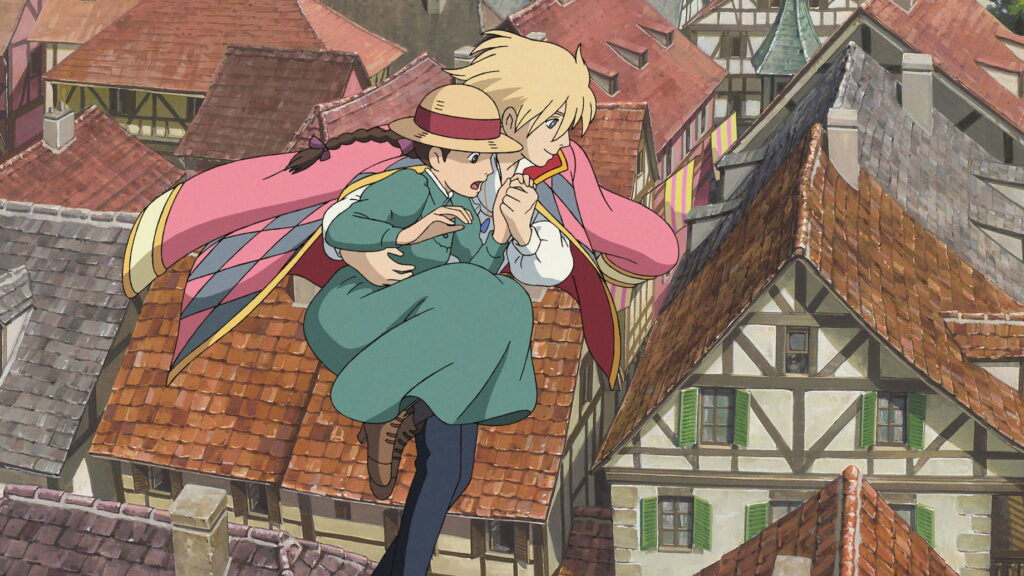Howl’s Moving Castle is a bit discombobulated, but charming and lovely. It’s one of those films where you can feel yourself being won over even as you wonder if it’s all holding together.
I watched the first half with my toddlers who were semi-attentive, more interested in our bag of gummi bears and rolling than in the dreamy steampunk vistas — it’s a little mature for them (though they did fine with Totoro and Kiki’s). I watched the second half splitting a bottle of wine with my wife, the kids finally tucked in bed, and our living room washed in the film’s warm glow. It wasn’t the worst way to watch Howl, all things considered: it’s a little sprawling and episodic, and I locked in at the end.
There’s no denying that this movie has a lot going on. It’s one of Miyazaki’s densest narratives in terms of plot and world-building, and also one of his longest. There’s a cursed hatmaker who becomes an old woman. A vain wizard with bird wings and mysterious absences. A talking flame with a contract. A castle on legs that clunks across huge landscapes. Also a war and politics to undercut the whimsy. It’s easy to see why some people bounce off the film or find it hard to follow, as it its plot swerves all over, and it seems actively disinterested in resolving some of its bigger arcs in conventional ways. Sophie’s transformation, for instance, is the story’s inciting incident, and yet the movie seems to forget it’s even a problem to be solved until the very end, where it resolves almost offhandedly.

On a tonal level, Howl’s Moving Castle is an unmitigated delight. Even when the plot frays, the textures and emotions hold strong. The film is suffused with visual generosity that brings the characters and settings to life. It’s a film more about atmosphere and mood than cause-and-effect. Watching Sophie sweep floors and make breakfast and quietly reorganize people’s lives through kindness is the true heart of the film—not the war, not the curse, not even Howl himself, but the effusive sense of compassion that ticks beneath it all.
The animation is simply gorgeous, and the real reason to check it out. Miyazaki’s love of flight is on full display here, with ships and birds and bombers slicing through painterly skies. There’s so much magic in the details: the waddle of Turnip-Head as he bounces behind Sophie through the woods, the flicker of Calcifer as he mutters about being fed, the tangled architecture of the castle itself. The film is best when it is visually felt.
Right now, I’m feeling mixed about where this sits in the Miyazaki pantheon. It doesn’t have the purity of My Neighbor Totoro, or the punch of Princess Mononoke, or the tight, dazzling vision of Spirited Away. Its spirit isn’t quite so crystallized and moving as Kiki’s Delivery Service. I suspect my final verdict will take another viewing or two to solidify.
Lastly: Turnip-Head (pre-transformation) is one of animation’s greatest characters. I will not be taking questions at this time.
Is It Good?
Good (5/8)
Dan is the founder and head critic of The Goods. Follow Dan on Letterboxd. Join the Discord for updates and discussion.

